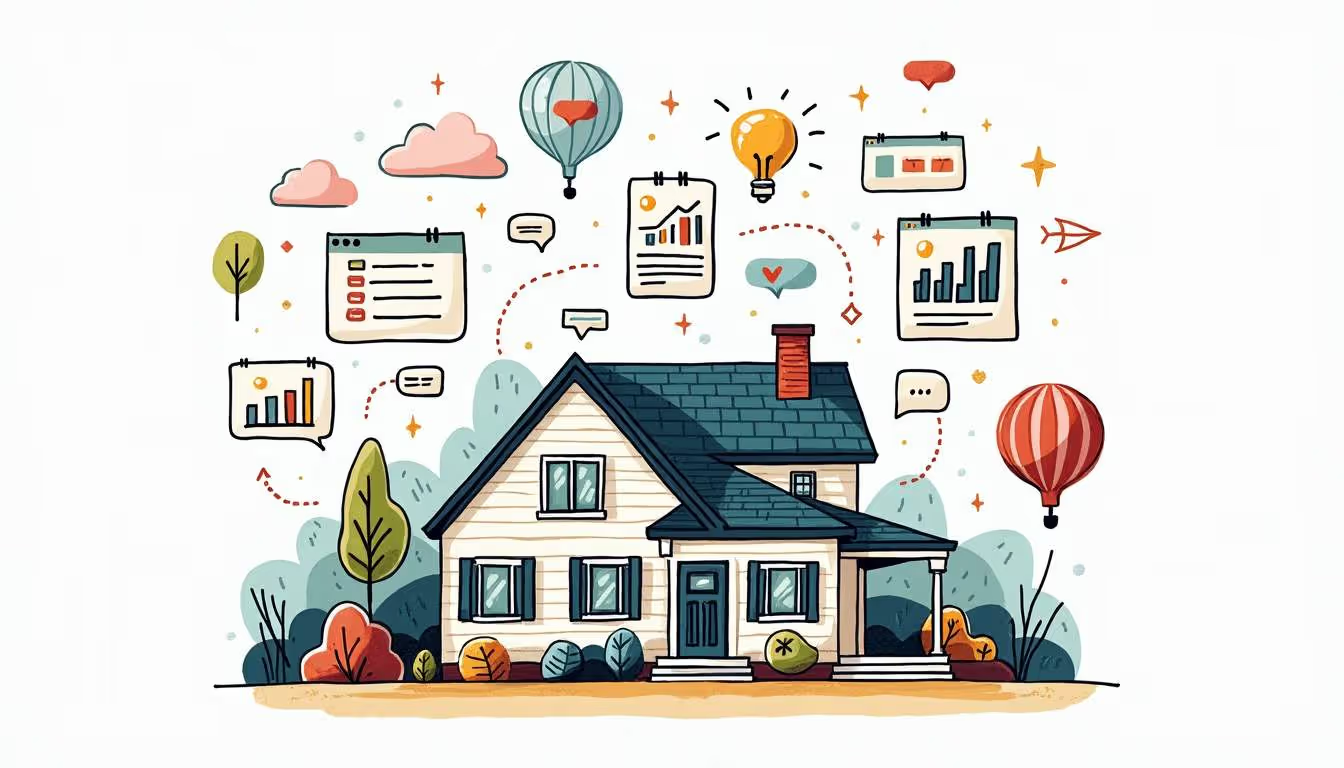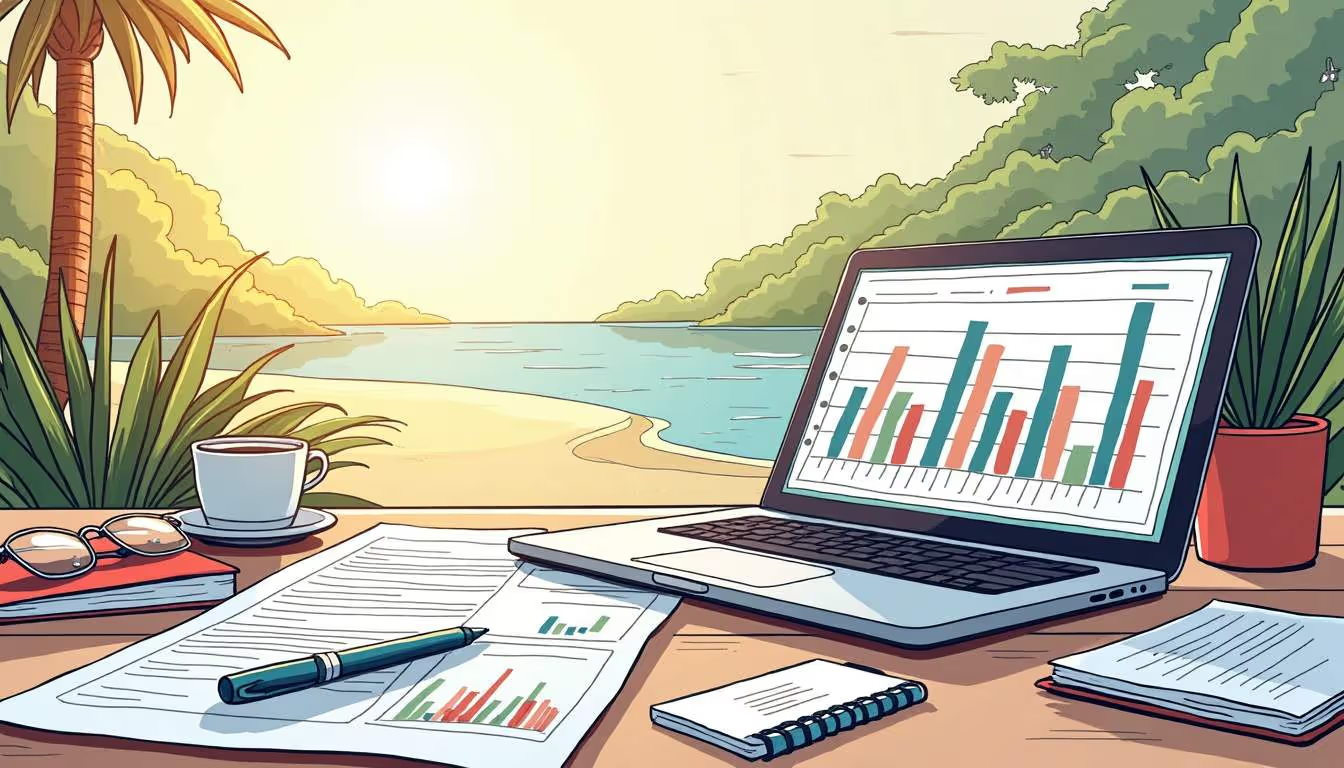How to Generate Unit Performance Reports for Vacation Rental Homes
In the ever-evolving world of vacation rentals, gaining a clear understanding of each property's performance is vital for optimizing revenue and enhancing guest experiences. Unit performance reports offer essential insights into the operational success of individual rental homes, empowering owners and managers to make strategic decisions. This article will walk you through the steps to create these reports efficiently.
Understanding Unit Performance Reports
Before embarking on report generation, it's crucial to comprehend what a unit performance report encompasses. These reports typically consolidate key metrics that reflect the performance of a specific vacation rental property over a set timeframe. They may include data on occupancy rates, rental income, guest feedback, and operational expenses. By evaluating these factors, property owners and managers can make data-driven decisions to refine their offerings and boost profitability.
Moreover, unit performance reports can be instrumental for benchmarking against industry norms. By comparing your property's metrics with those of similar rentals in the vicinity, you can spot trends and adjust your strategies accordingly. This competitive analysis not only helps in gauging your property's market position but also aids in setting achievable goals for future performance.
Key Metrics to Include
When crafting a unit performance report, certain metrics are indispensable for a thorough analysis. The occupancy rate is a primary metric, indicating the percentage of time the property is rented out relative to its availability. This metric helps assess the property's demand. A high occupancy rate often points to successful marketing and appealing property features, while a low rate may suggest the need for pricing or amenity adjustments.
Another critical metric is the average daily rate (ADR), which shows the average rental income generated per day. When combined with the occupancy rate, ADR can provide insights into pricing strategies and market positioning. Additionally, monitoring total revenue and expenses will aid in understanding profitability. For a more detailed analysis, consider calculating the revenue per available room (RevPAR), which merges both occupancy and ADR to offer a more nuanced view of financial performance.
Importance of Guest Feedback
Guest reviews and ratings are crucial for evaluating the quality of a vacation rental. Including a summary of guest feedback in the performance report can highlight strengths and areas for improvement. Positive reviews can enhance marketing efforts, while constructive criticism can guide operational improvements. Furthermore, analyzing trends in guest feedback over time can uncover patterns that may not be immediately evident, such as recurring issues or consistently praised features.
Additionally, engaging with guests post-stay and encouraging them to leave reviews can provide a more comprehensive picture of the guest experience. This proactive approach not only fosters a sense of community but also shows potential guests that you value their opinions and are committed to continuous improvement. By integrating guest feedback into your unit performance report, you can make informed decisions that enhance guest satisfaction and ultimately lead to higher occupancy rates and increased revenue.
Data Collection Methods
Generating accurate unit performance reports heavily depends on the quality of data collected. There are several methods to gather this information, each with its own benefits and challenges.

Utilizing Property Management Software
One of the most effective ways to collect data is through property management software. These platforms often come equipped with reporting features that automate the collection of performance metrics. Users can easily access real-time data on bookings, revenue, and guest interactions, simplifying the reporting process.
Moreover, many property management systems integrate with booking platforms, allowing for seamless data synchronization. This integration ensures that the information is current and accurate, which is crucial for making timely decisions. Additionally, these systems often provide analytical tools that can help identify trends over time, enabling property managers to adjust their strategies based on historical data. For instance, if a particular season shows a consistent dip in bookings, managers can proactively implement promotional campaigns to boost occupancy rates.
Manual Data Collection
For those who prefer a hands-on approach, manual data collection is another option. This method involves tracking bookings, revenue, and expenses through spreadsheets or other documentation. While this can be more labor-intensive, it allows for a customized reporting structure tailored to specific needs.
However, manual collection can lead to errors or inconsistencies if not managed carefully. It requires diligence and organization to ensure that all relevant data is captured accurately. Additionally, this method can provide deeper insights into specific areas of operation that automated systems might overlook. For example, by manually logging guest feedback and correlating it with occupancy rates, property managers can gain valuable insights into guest satisfaction and identify areas for improvement. This qualitative data can be instrumental in enhancing the overall guest experience, ultimately leading to higher retention rates and positive reviews.
Creating the Report
Once the necessary data has been collected, the next step is to compile it into a coherent report. The structure of the report can significantly impact its readability and usefulness.

Choosing the Right Format
There are various formats in which a unit performance report can be presented. Common formats include PDF documents, Excel spreadsheets, or even online dashboards. The choice of format often depends on the audience and the level of detail required.
For internal use, a detailed Excel spreadsheet may suffice, allowing for easy manipulation of data and calculations. Conversely, for presentations to stakeholders or potential investors, a polished PDF report with visual elements may be more appropriate.
Incorporating Visuals
Visual elements such as charts and graphs can enhance the report's effectiveness by making complex data more digestible. For example, a bar graph illustrating occupancy rates over time can quickly convey trends that might be overlooked in a table of numbers.
Additionally, infographics can summarize key findings, making the report more engaging and easier to understand. Visuals not only aid comprehension but also help in retaining the reader's attention.
Analyzing the Data
Generating a report is just the beginning; analyzing the data is where the real insights emerge. Understanding the implications of the metrics is crucial for making informed decisions about the property.
Identifying Trends
By reviewing performance reports over multiple periods, trends can be identified. For instance, a consistent drop in occupancy rates during certain months may indicate seasonality, prompting owners to adjust pricing strategies or marketing efforts accordingly.
Similarly, analyzing guest feedback trends can reveal common issues or highlight aspects that guests particularly appreciate. This information can guide operational changes or enhancements to the property.
Benchmarking Against Competitors
To gain a deeper understanding of performance, it can be beneficial to benchmark against similar properties in the area. Comparing metrics such as occupancy rates and ADR with competitors can provide context for your property's performance.
Many property management systems offer benchmarking tools that allow users to see how their properties stack up against the competition. This comparison can highlight areas for improvement and inform strategic decisions moving forward.
Implementing Changes Based on Insights
The ultimate goal of generating unit performance reports is to drive improvements. Once insights have been gleaned from the data, it's time to implement changes that can enhance performance.

Adjusting Pricing Strategies
One of the most direct ways to respond to performance data is by adjusting pricing strategies. If occupancy rates are lower than desired, consider implementing promotional rates during off-peak times or offering discounts for longer stays. Conversely, if demand is high, raising rates may be appropriate.
Dynamic pricing tools can also assist in adjusting rates based on real-time market conditions, ensuring that pricing remains competitive and attractive to potential guests.
Enhancing Guest Experience
Insights from guest feedback should not be overlooked when making changes. If reviews consistently point to a lack of amenities or issues with cleanliness, addressing these concerns can lead to improved guest satisfaction and, ultimately, better performance metrics.
Investing in upgrades or additional services can differentiate a property from competitors, making it more appealing to potential guests. For instance, adding a hot tub or improving Wi-Fi connectivity can significantly enhance the guest experience.
Regularly Reviewing Performance Reports
Generating unit performance reports should not be a one-time task. Regular reviews are essential for staying on top of trends and making timely adjustments. Establishing a routine for report generation can help maintain focus on performance metrics.
Setting a Reporting Schedule
Creating a reporting schedule can ensure that data is reviewed consistently. Monthly or quarterly reports can provide a snapshot of performance over time, while weekly reports may be beneficial for properties with high turnover rates.
By setting a schedule, property owners and managers can proactively address issues as they arise, rather than waiting for performance to decline significantly before taking action.
Using Reports for Strategic Planning
Performance reports can also play a vital role in long-term strategic planning. By analyzing trends over time, property owners can make informed decisions about future investments, marketing strategies, and operational improvements.
For example, if data shows a growing demand for eco-friendly accommodations, owners might consider implementing sustainable practices or marketing their properties as green options. This forward-thinking approach can position properties favorably in an evolving market.
Conclusion
Generating unit performance reports for vacation rental homes is a crucial practice for maximizing revenue and enhancing guest satisfaction. By understanding the key metrics, collecting data effectively, and analyzing insights, property owners can make informed decisions that lead to improved performance.
Regularly reviewing these reports and implementing changes based on data-driven insights can help ensure that vacation rental homes remain competitive in a dynamic market. Ultimately, a commitment to continuous improvement will yield long-term success in the vacation rental industry.
Ready to take your vacation rental business to the next level? VRPlatform is here to streamline your accounting processes and enhance your financial oversight. With our comprehensive suite of features including Owner Statements, PMS Integration, and Trust Reconciliation, you'll save time, reduce errors, and foster stronger relationships with owners. Whether you're a property manager, an accounting partner, or a property owner, VRPlatform provides the automation, compliance, and transparency you need to drive trust and support growth. Sign up for a free trial today and experience the difference VRPlatform can make in your vacation rental management.



